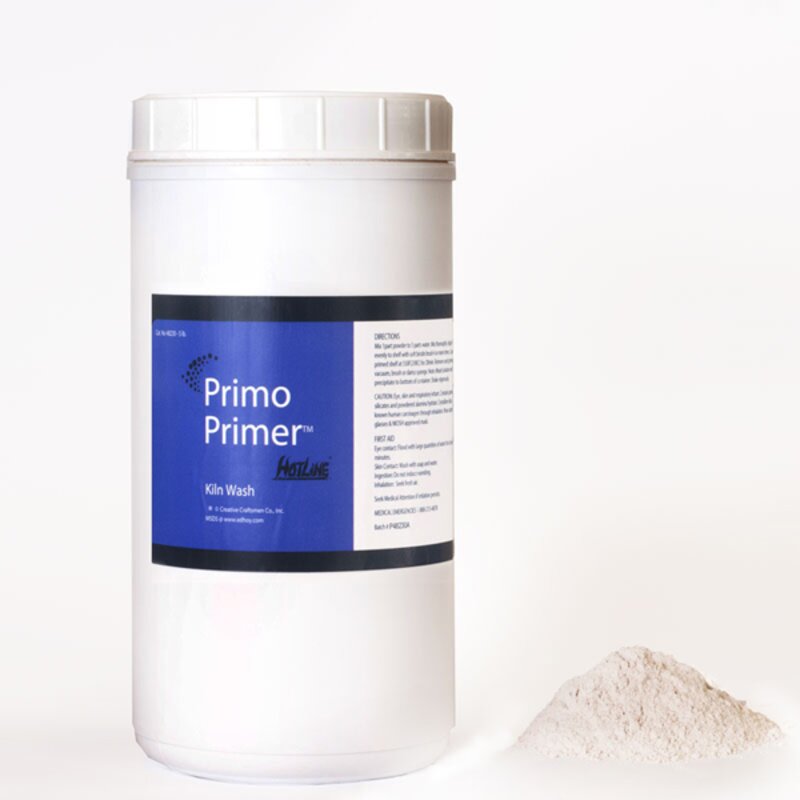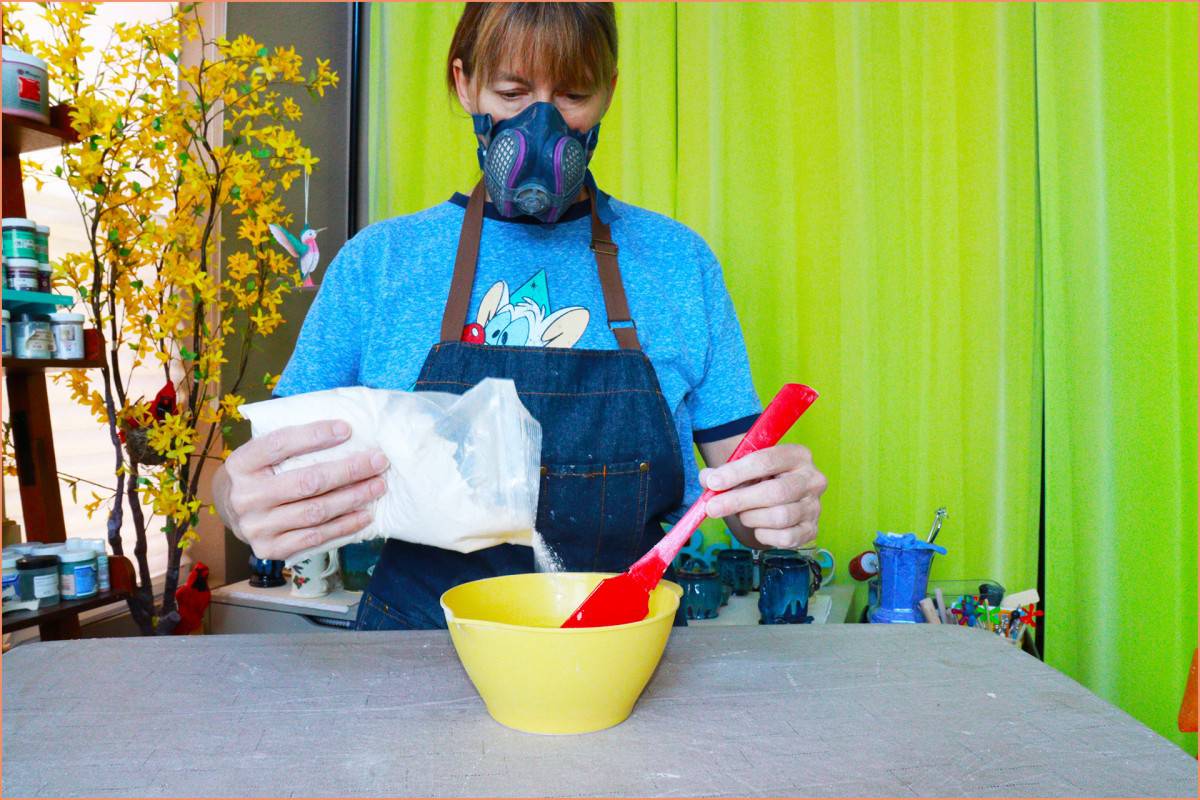
A successful art glass kiln firing is dependent on various factors. One particularly valuable factor which protects an artist’s work is the art glass kiln wash. Whether you’re a glass or a ceramic artist, knowing the properties of kiln wash is essential. It helps you produce high-quality end results.
In this article, we’ll guide you through the purpose of kiln wash. We’ll explain how to mix, apply, remove, and dispose of kiln wash effectively.
What Is Kiln Wash?
Kiln wash, also known as shelf primer, is a liquid substance that is applied onto kiln shelves. It is a sacrificial layer that prevents glass artwork from sticking to the kiln shelf. It is made of refractory substances—zirconium, alumina, silica, etc.—with high melting points.
Depending on the intended firing temperature, glass artists can adjust the kiln wash formula. For example, more alumina or zirconium is used in high-fire programs because of their high melting points.
Why do you Need Kiln Wash?
The sole purpose of kiln wash is to protect the glass artwork and the kiln shelf. The kiln shelf is usually made of hard ceramic material. If the glaze comes in direct contact with the kiln shelf, it will stick.
To make sure this never happens, we use kiln wash to ensure the glaze won’t stick to the kiln shelf. It is a preventative measure for all glaze firing accidents such as:
- You may tip over the kiln shelf
- Glaze may unexpectedly run, drip, spit or melt into the shelf
- You may over-fire the kiln
How to Mix Kiln Wash
A pre-made kiln wash usually comes in powder form. All you need to do is put some of the powder in a bowl and add water to it. Stir the mixture until it has the consistency of pancake batter.

Too thick and too thin kiln wash have their own demerits.
- Too thick kiln wash will cause peeling and cracking during firing.
- Too thin kiln wash will not effectively protect the kiln shelf.
Pro Tip: Always mix in small batches
How to Apply Kiln Wash?
Using a classic ceramic kiln or an Olympic glass kiln? The procedure of applying kiln wash is the same. Before applying kiln wash to your new kiln shelf, wipe it with a damp cloth to remove dust particles.
Also, it is recommended to fire your empty kiln to drive out any organic material. Now you are ready to apply kiln wash.
Always Apply Thin Coats
You can use a spray gun, paintbrush, utility brush, sponge, or roller to apply kiln wash to the kiln shelf. Make sure you apply thin and even coats. Avoid applying kiln wash to the edges of the kiln shelf. It can flake off onto your glazed pieces during firing.
Apply at least 3 Coats of Kiln Wash

You should apply at least three full coats of kiln wash. It ensures enough protection between your glass artwork and the kiln shelf. Allow 60 minutes per layer to dry thoroughly before applying the next one.
Scrape Kiln Wash that Flakes off
If the kiln wash is flaking, use a paint scraper to remove any loose pieces and apply a new coat. Similarly, if you notice any glaze dropping onto the shelf, remove it and dab some fresh kiln wash on the bare spot.
Kiln Wash Placement
It should be applied only to the top of the kiln shelf instead of on both sides. Chances are your kiln wash starts to flake and leave marks on your glaze. Make sure you apply a kiln wash away from the heating elements.
How to Remove Kiln Wash
Just because its name is kiln wash, doesn’t mean you could easily wash it off after firing. You need to scrape off the loose kiln wash patches before it starts flaking. A heavy-duty paint scraper with a 3- or 4-inch width is the best to scrape off flakes.
Avoid using a six-inch or bigger scraper. Although a big scraper may at first seem a better choice. You may think it will cover more area in less time. But in reality, it is more flexible and won’t help you scrape off the kiln wash easily.
Glaze Removal
It is essential to remove any glaze stick to the shelf before you fire your kiln again. The glaze will damage your kiln shelf by gradually eating it away. Be careful while removing melted glaze from the shelf. You may damage the kiln shelf by digging too hard.
How to dispose of Kiln Wash
You should always dispose of your used kiln wash in a tied-up trash bag. Although Kiln Wash may not be a toxic substance, its dust particles (if inhaled) may harm your lungs.
Conclusion
If you wish your art glass pieces to easily come out of the kiln shelf, you need to apply kiln wash to your kiln shelf. It protects glaze from sticking to your kiln and keeps your kiln in prime condition for your next projects.
We hope this guide will help you to better understand what kiln wash is and why it’s needed. Now you know how to mix, apply, remove, and dispose of kiln wash.
